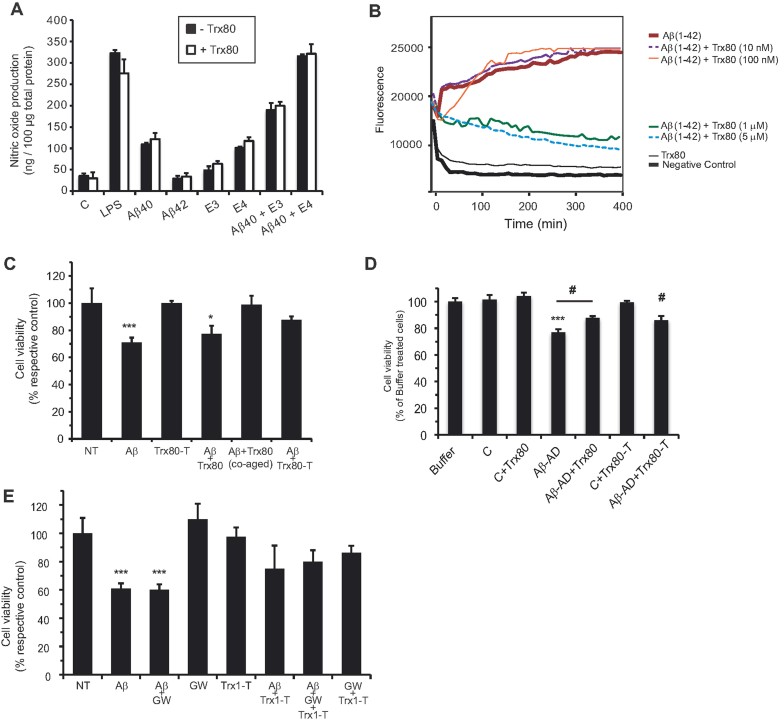Figure 6. Trx80 is not pro-inflammatory in glia but inhibits Aβ(1–42) aggregation and toxicity.
- Nitric oxide production was measured in mixed glial primary cultures from rat in response to Trx80 stimulation (10 nM) in combination with different inflammatory modulators. LPS = lipopolysaccharide (100 ng/ml); C = untreated cells; Aβ(1–42) (10 µM); Aβ(1–40) (10 µM); E3 = apoE3 (10 nM); E4 = apoE4 (10 nM). Data are expressed as ng of nitrites produced per µg of total protein. Bars represent mean values of three experiments ± SEM.
- Trx80 (1 and 5 µM) inhibited the fibrillar aggregation of Aβ(1–42) (20 µM) detected by fluorescence Thioflavin-T assay. Lower Trx80 concentrations were without effect.
- Aβ(1–42) (10 µM, 24 h) reduced cell viability in non-transfected (NT) and in Trx80 (100 nM)-treated SH-SY5Y cells. Aβ(1–42) was harmless when pre-incubated with Trx80 (100 nM) or added to Trx80-transfected (Trx80-T) cells. Data are expressed as percentage of the respective control and bars represent mean values of four experiments ± SEM (ANOVA followed by Bonferroni's PLSD post hoc test; ***p = 0.001, *p = 0.04).
- Aβ-rich fractions (1 µl) extracted from one AD brain (Aβ-AD) reduced cell viability of SH-SY5Y cells. The Aβ-AD effect was partially inhibited by addition of Trx80 (100pM) or by overexpression of Trx80 (Trx80T). Treatment with extracts from a plaque-free control brain (C) did not harm the cells. Data are expressed as percentage of values in buffer treated cells, and bars represent mean values of 9 experiments ± SEM (ANOVA followed by Bonferroni's PLSD post hoc test; ***p = 0.001 against controls; #p = 0.01 against Aβ-AD).
- Overexpression of Trx1 (Trx1-T) was partially protective against Aβ(1–42) (10 µM, 24 h) even under ADAM10/17 inhibition (GW280264X, 10 µM). Data from four experiments are shown as percents of MTT values from controls (untreated cells, NT) ± SEM (ANOVA followed by Bonferroni's PLSD post hoc test; ***p = 0.001).

